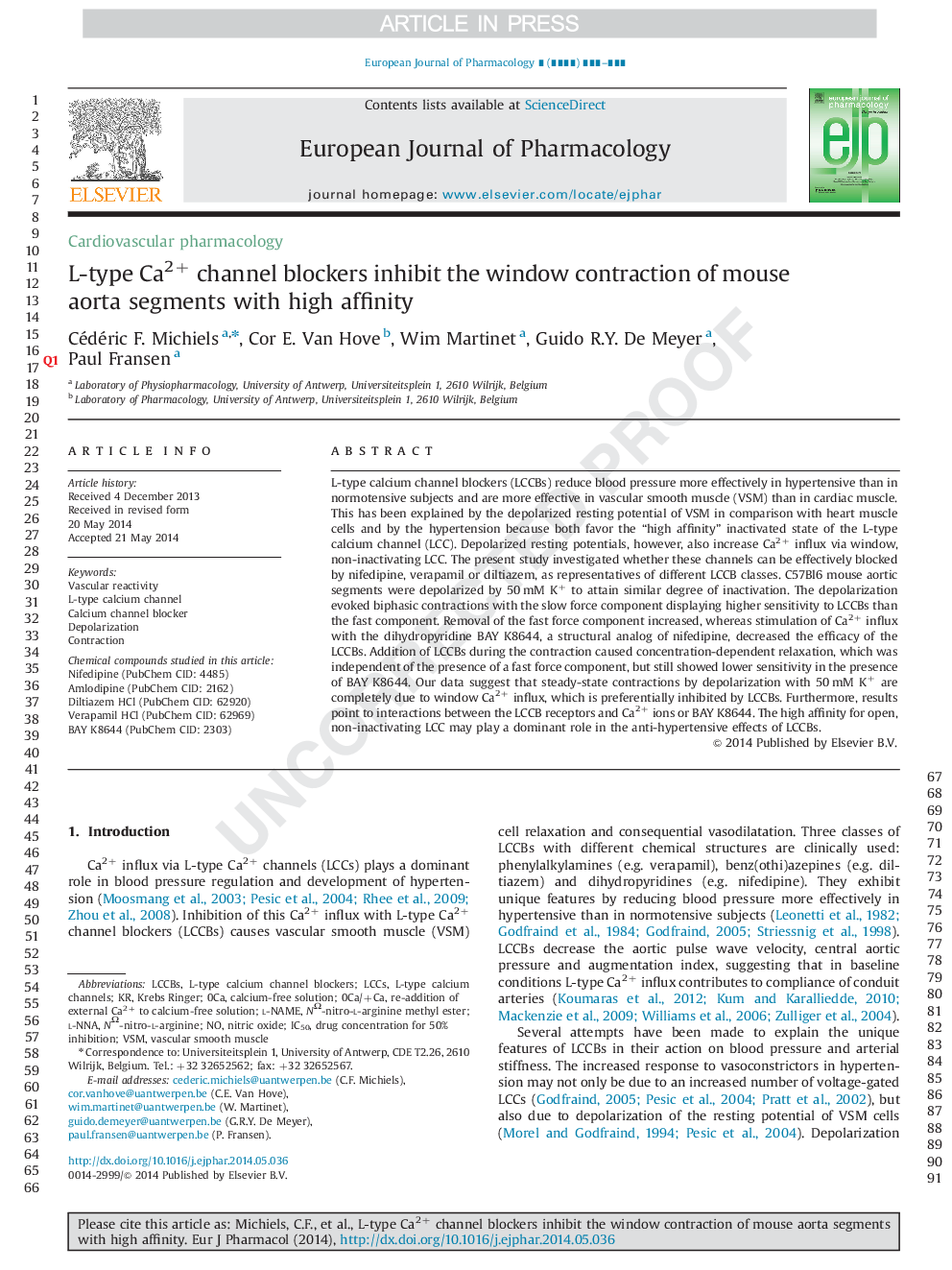| Article ID | Journal | Published Year | Pages | File Type |
|---|---|---|---|---|
| 5827932 | European Journal of Pharmacology | 2014 | 9 Pages |
Abstract
L-type calcium channel blockers (LCCBs) reduce blood pressure more effectively in hypertensive than in normotensive subjects and are more effective in vascular smooth muscle (VSM) than in cardiac muscle. This has been explained by the depolarized resting potential of VSM in comparison with heart muscle cells and during hypertension, because both favor the “high affinity” inactivated state of the L-type calcium channel (LCC). Depolarized resting potentials, however, also increase Ca2+ influx via window, non-inactivating LCC. The present study investigated whether these channels can be effectively blocked by nifedipine, verapamil or diltiazem, as representatives of different LCCB classes. C57Bl6 mouse aortic segments were depolarized by 50Â mM K+ to attain similar degree of inactivation. The depolarization evoked biphasic contractions with the slow force component displaying higher sensitivity to LCCBs than the fast component. Removal of the fast force component increased, whereas stimulation of Ca2+ influx with the dihydropyridine BAY K8644, a structural analog of nifedipine, decreased the efficacy of the LCCBs. Addition of LCCBs during the contraction caused concentration-dependent relaxation, which was independent of the presence of a fast force component, but still showed lower sensitivity in the presence of BAY K8644. Our data suggest that steady-state contractions by depolarization with 50Â mM K+ are completely due to window Ca2+ influx, which is preferentially inhibited by LCCBs. Furthermore, results point to interactions between the LCCB receptors and Ca2+ ions or BAY K8644. The high affinity for open, non-inactivating LCC may play a dominant role in the anti-hypertensive effects of LCCBs.
Keywords
Related Topics
Life Sciences
Neuroscience
Cellular and Molecular Neuroscience
Authors
Cédéric F. Michiels, Cor E. Van Hove, Wim Martinet, Guido R.Y. De Meyer, Paul Fransen,
